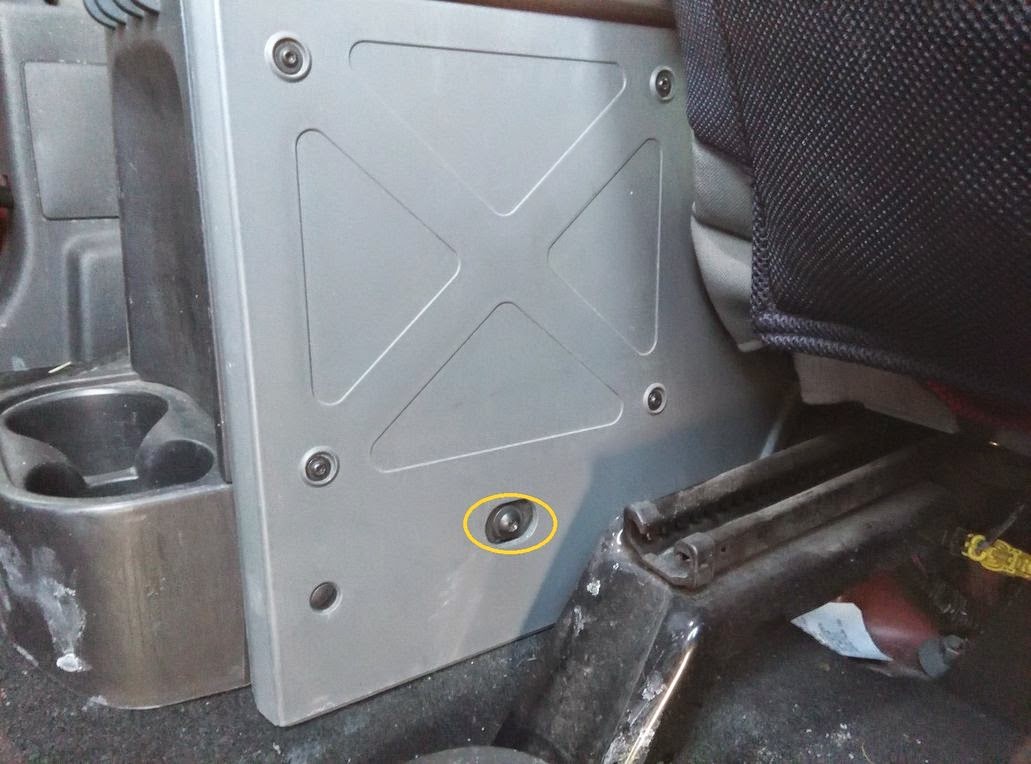Jeep Wrangler is an iconic of off-road vehicle in many off-road lovers' mind. Since 1930's, it's well-known by the capabilities in off-road. It can go anywhere, do anything. But it's all depends on the 4WD works properly. If the 4 wheel drive shifting is not working properly, it stuck like any other regular vehicles.
My 2008 Jeep Wrangler Unlimited Rubicon was in a problem on 4WD shifter or lever (linkage) loose. Actually, there were twice I was in this kind of trouble. Fortunately, I wasn't in far-away suburban or mountains. The first time, it happened that was on my driveway. I tried to switch the 4WD when the car is parking on my driveway, because a friend called me ask how to fix the loose shifter/lever. When I pulled the lever/shifter back to high 4 wheel drive position, it seemed frozen. So I pulled it harder to the 4WD high position, it just suddenly move to the way end very easy. And I realized that something is broken underneath. I go under the car and follow the linkage or lines of 4WD shifter, and found that the ring is out of the lever. There is a plastic bushing to hold the linkage in position, it's broken to pieces.
I am DIYer, and would like to fix the stuff by myself. I checked on the internet, and found the solution and parts number from Chrysler dealer. It's easy to get one and put it on. But it's still a plastic stuff, it will be broken again in future. I would like to find some stuff which is stronger than the plastic one. I finally find a oiled bronze bushing which is very close to the plastic bushing. I did a little bit modification and put it on to fix it for a long time. (I will post the solution on another post later). After the fixing, I thought this will be working for my car almost permanently.
This winter is extremely cold and a lot of snow in GTA(Greater Toronto Area) , I am working on my Private Pilot License(PPL) at Burlington Airpark. On Tuesday (17th Feb, 2015), I just drove out the school and a phone call came in. So I tried to stop on roadside to answer the phone. The road side was covered by the snow, it covers the drainage channel of the road. My car was just stopped on the edge of the channel and slipped into the channel. I wasn't worried about that, because I knew the 4WD of Wrangler Rubicon will bring me out of there. After the phone call, I tried to shit to the 4WD drive mode, and again, it seems the lever got stuck. I thought it might be a little bit ice underneath, and blocked the linkage. So let me pull the shifter harder to get on 4WD. Unfortunately, the shifter became loose again, oh dear, it's -20 Celsius outside. I am stuck in road side, can't get back to road.
I have to take a look what's going on with my Jeep Wrangler. I was thinking, it might be my fixing wasn't good, so the linkage come out of position again. If I temporarily push it back, and switch to 4WD. At least, I can get out of the channel and back to road, and then switch back to 2WD to go home and fix it later. When I get down to the underneath of the Jeep, it's actually easy to check it because the car is leaning to the right, I was so disappointed. My fixing is very good, and the linkage is in a good position. So that means there are something else wrong, I can't fix it to make the 4WD running.
So the only thing I can do is asking somebody to tow me out from there. The good thing is I have my towing strap on my Jeep for winter time. It's rural countryside, there were just a couple of sedan passing by. One car stopped and if they can help. Thank you very much! A medium size sedan can tow out a Jeep Wrangler (about 4600lb/2100kg), I don't think so. I was just 2 minutes driving out of school, and I know my CFI(Certified Flight Instructor) drives a GMC Canyon pickup. So I called him to come and tow my car back to road. Five minutes later, my instructor came and I put the towing strap between my Jeep and his truck. He drives forward for about 10 feet, and my Wrangler is back to road again. Thanks buddy!













